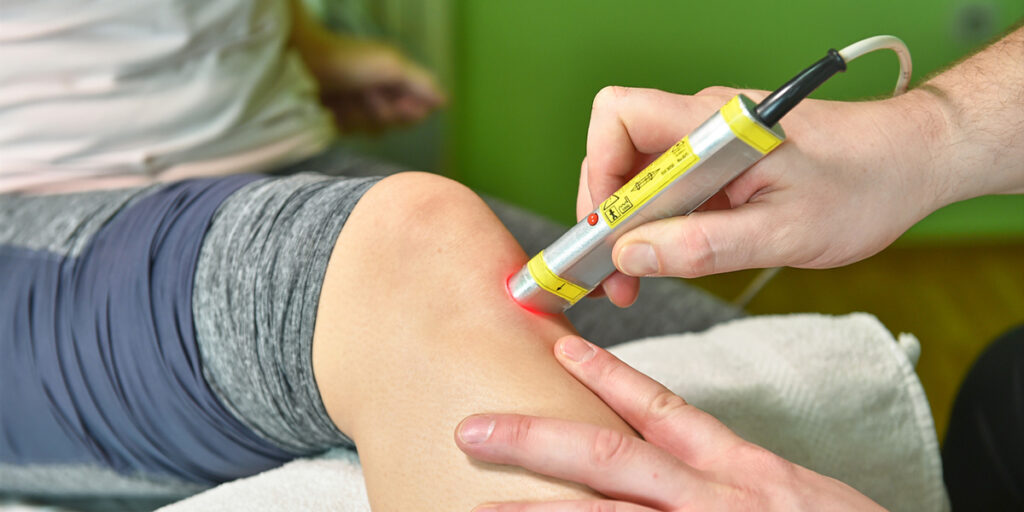The concept of using light and energy to reduce pain and inflammation, accelerate healing, and relaxing muscles sounds like something from science fiction, but like other things, this idea has slowly become science fact. How does laser treatment work and what are the limitations? Let’s talk about it.
Interested in Laser Therapy? Click Here for more information.
Sure, it sounds like magic, but laser treatment therapy is very much grounded in reality. The energy from the laser stimulates the body to begin healing at a cellular level by taking advantage of biological and chemical processes. How does it work? Cells can regenerate faster with the light stimulation provided by laser therapy; this helps heal wounds and injuries faster, making it possible to reverse damage.
How does laser treatment help reduce pain? Light energy acts as a signal to the body to release certain chemicals within the body. When there are more of these hormones in the body, pain is reduced and the healing process accelerates.
Laser treatment decreases swelling. Exposure to the laser’s light helps break up pockets of swelling and inflammation. This will help loosen muscles and repair pinched nerves. This will help provide greater mobility and reduce pain. Laser treatment is also a needle-less procedure, so if needles give you the heebie-jeebies, laser treatment may be an attractive alternative.
This treatment also helps improve blood flow. Since blood carries oxygen with it, the area will get more oxygen and other essential elements it needs to repair itself. This treatment option is suited for both acute and chronic pains.

Exposure to the laser’s light helps break up pockets of swelling and inflammation.
There are a few different lasers that can be used for this course of therapy. Perhaps the most common laser is what is known as a cold laser. Cold lasers, used in cold laser therapy, is placed directly over the injured area for at least 30 seconds, though this may take longer depending on the size of the injured area.
While the laser is being used, the light’s energy (non-thermal protons) has the ability to affect 2-5 centimeters below the skin—so they’re great for treating hands and fingers. The cells under the skin absorb the energy, eventually normalizing the damaged or injured tissue.
Another type of laser therapy, the one we specialize in, uses a class IV laser, rather than a class III. The biggest difference between the two is the power output: class III lasers’ output is between 5 and 500mW while class IV lasers’ outputs exceed 500mW. These high-powered lasers are great for treating areas like muscle and bone. We also incorporate prolotherapy, a series of joint fluoroscopic, ultrasound-guided injections, into this treatment procedure to achieve better results for our patients than the laser would achieve alone.
When it comes to pain management solutions that negate the need for surgery, laser treatment therapy is just one of the many treatment options we make available for our patients. For all your pain treatment solutions, so you can get back to the life you want to live, get in touch with us and we’ll be happy to help.


